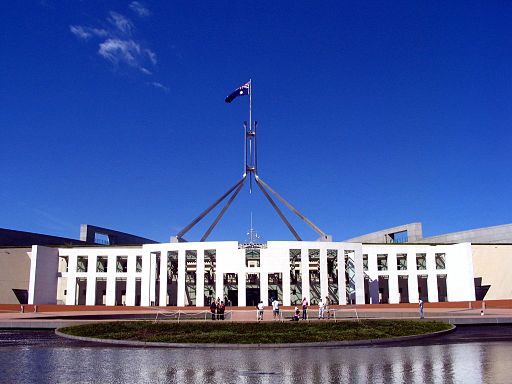The Federal Government is to be
commended for its early steps to redress disadvantage, such as the creation of
a Social Inclusion Unit, its commitment to reduce homelessness, and its overall
policy theme of investment in people as the key to a successful future for the
nation. But it is vital that this policy thrust includes a strong focus on investment
in all disadvantaged Australians. Moreover, the chances of such investment occurring
shouldn’t depend upon the inclination of one particular government.
Rather, there is a need for initiatives
that build evidence for such an approach and thus gain support for it among the
general public, across the political spectrum, and at all levels of government.
A ‘social investment institute’ focussing on investment in the disadvantaged is
one such initiative. A ‘social
investment institute’ would ideally be an independent governmental authority (more
independent than the new Social Inclusion Unit), and it could have a broad
watching brief over policies affecting the most disadvantaged – however defined.
Its overall goal would be to assess the costs and benefits of existing and
alternative policies relating to the disadvantaged – that is, costs and
benefits for both the disadvantaged themselves and the broader society. This
brief could cover all levels of government – if governments at these levels
could be persuaded to agree, and with coast to coast governments of the same hue
now is a better time than most – as well as covering government
instrumentalities and NGOs funded by government.
The social investment institute would
initiate policy evaluation and research that could either be done in-house or contracted
out to universities or specialist bodies like the Institute for Family Studies
or the Australian Institute of Criminology.
It would also collect existing research from Australia and abroad. There are many
precedents for this sort of body: statutory organisations having advisory,
review or research functions – such as the two just mentioned. It would,
however, have a different brief to bodies such as these, with its focus on all
disadvantaged Australians and a specific focus on social investment yielding broader
social benefits.
If it couldn’t be set up as a
government agency, a second option would be to set it up as an independent body
– like a think tank. Questions of
unstable funding and access to government departments render this option less
desirable. Furthermore, there would be
no imperative for the government to ‘own’ the body’s recommendations.
Image: Powerhouse Museum.
Having a social investment institute
producing independent, well-researched and publicly accessible data and policy recommendations
would have the following advantages:
- It would be putting a
strong general case for investment in the disadvantaged, as well as putting the
case for specific kinds of investment. - It would be a tool
for evaluating the effectiveness of current policies, and would encourage
policy consistency and continuity across departments, jurisdictions and
successive governments. - It would lead to more
focused and motivated action by government departments once they could see the whole
range of benefits to be derived from effective policy in this area. - By calculating and
highlighting the likely returns on investment in the disadvantaged, it would
encourage consideration of the case for financing of such investment out of
borrowings. - It would make it
harder for political parties to engage in inappropriate credit-taking (for the
results of policies instituted by their opponents) or blaming (for the current
consequences of policies they had earlier instituted). - It would result in a
more informed general public and civil society, and would provide useful information
for non-profits and businesses wishing to support programs for the
disadvantaged. - It would provide a
countervailing force to powerful sectors of society that have steered funds
toward their own concerns.
Of course an obvious question here is:
What would motivate governments or parties to support the creation of such a
body? Wouldn’t they be making a rod for their own backs? I don’t believe so.
Most politicians on the left, and a fair proportion in the centre and on the
right, have gone into politics because
they see government action as potentially beneficial in whatever spheres of
life concern them. The same could be said about many middle-level to senior public
servants. Once in their positions, however, politicians and officials become
very aware of the competing demands for the public dollar, and of the political
costs (real or perceived) of increasing the size of the pie through increased
taxation or borrowing, which lead them to focus on what can be cut or stopped
from growing as much as on what can be introduced or expanded.
If there were some authoritative body that legitimised both the sort of
spending they believed in and ways of raising the necessary funds, they may
welcome it. It would be both generating greater policy certainty and reducing
the political costs of implementing that policy. In this regard, it’s
interesting to reflect on Ross Garnaut’s reports on climate change. These have substantially
shifted the centre of gravity of acceptable climate change solutions in a
radical direction, thus reducing the political cost of advocating radical
solutions. Labor’s proposed target of a
60% cut in carbon emissions by 2050 seemed quite forward looking in comparison
to the Coalition’s policy, but tame when compared to Garnaut’s proposed 70-90%
cut, and yet the media have been broadly positive about Garnaut’s
recommendations. A social investment
institute could produce a similar shift in its policy area.
But to build initial support for
greater investment in the disadvantaged – and for the creation of something
like a social investment institute – there would need to be a broad-based
national campaign. I can imagine such a campaign having two stages.
The first stage would entail reaching
and involving the ‘conscience’ constituency – people motivated by compassion
and a desire for social justice, people from churches, welfare agencies,
unions, community organisations, green groups and some political parties, as
well as other concerned citizens. This campaigning would be different from the
day-to-day advocacy work of organisations within this group in two respects.
First, it would be a nationally coordinated campaign with overall goals,
strategies and materials, and second, it would focus on a very specific
message, namely, that the right quantity and kind of spending on the
disadvantaged is a form of investment that can generate net economic and social
benefits for the whole society.
Members of the conscience constituency –
once persuaded, activated and equipped with information and materials – would then
take this campaign message to those not so motivated by social justice or
compassion, but capable of appreciating the economic and social benefits that
accrue to the broader society. This would constitute the campaign’s second
stage.
Some may think it a naïve idea that
this latter sector of society could be persuaded to support such investment on
these grounds. But there is the precedent of the Business Council of Australia
– not an organisation known for its particular concern for the disadvantaged or
its support for increased government spending – which teamed up with Dusseldorp
Skills Forum to commission a report
into the training needs of young people dropping out of school early, and older
workers. This report predicted significant economic benefits from such
investment far exceeding costs. (1)
If the Business Council can see the benefits of such investment there’s no
reason why other Australians can’t.
There’s a wonderful opportunity here to
demonstrate to the broader Australian community how we would all be better off
in the medium to long term (and sometimes even the short term) if as a society
we invested substantially in all
Australians, including the most disadvantaged. We shouldn’t let that
opportunity slip by.
(1) Access Economics, The
Economic Benefit of Increased Participation in Education and Training,
Business Council of Australia & Dusseldorp Skills Forum, 2005.
Rob adds: I have written these
articles as part of a project – as yet unfunded but with some institutional
support – that seeks to research and disseminate the ideas discussed. I would
welcome your feedback on the articles and your ideas about how this project
might be advanced, supported and resourced.
| [adsense:234×60:1:1] |



